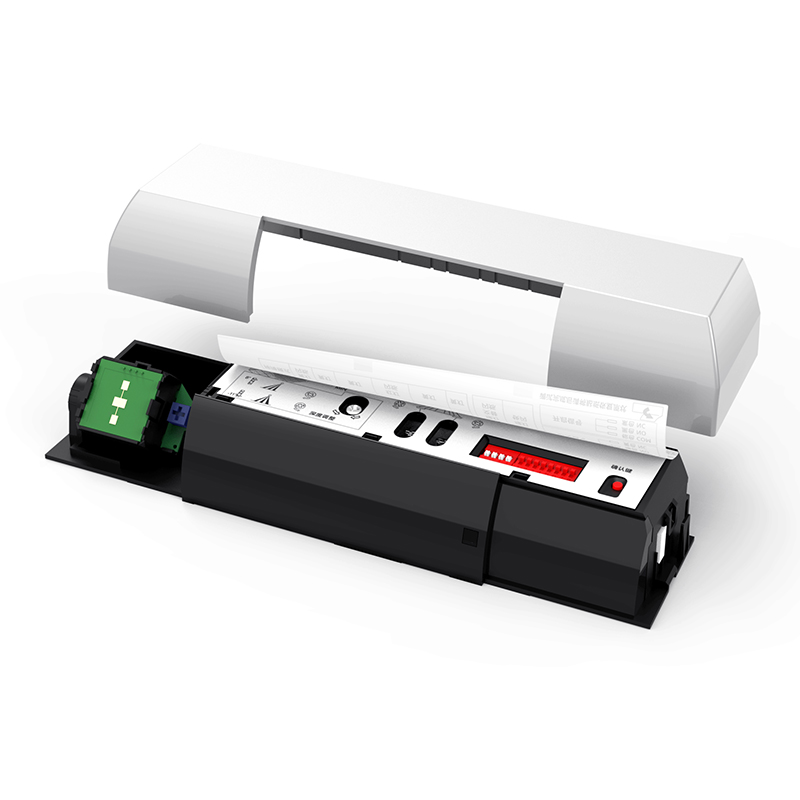In che modo l'installazione di un sensore automatico della porta scorrevole OEM influisce sull'efficienza energetica?
Nel mondo attuale attento all'ambiente, l'efficienza energetica è una considerazione fondamentale per le aziende e i proprietari di edifici che cercano di ridurre i costi operativi e ridurre al minimo la loro impronta di carbonio. https://www.u-sensors.com/ ">sensori automatici per porte scorrevoli presenta una soluzione promettente per migliorare l'efficienza energetica negli spazi commerciali e pubblici. Controllando in modo intelligente il funzionamento delle porte scorrevoli, questi sensori offrono una serie di vantaggi che contribuiscono al risparmio energetico e agli sforzi di sostenibilità.

1. Funzionamento ottimizzato della porta: Uno dei modi principali in cui i sensori automatici delle porte scorrevoli OEM influenzano l'efficienza energetica è l'ottimizzazione del funzionamento delle porte. Le porte scorrevoli tradizionali manuali o costantemente aperte possono portare a notevoli sprechi energetici permettendo all'aria condizionata di fuoriuscire e all'aria esterna di infiltrarsi nell'edificio. I sensori automatici rilevano la presenza di individui che si avvicinano alla porta e attivano la sua apertura solo quando necessario, minimizzando la durata dei cicli a porta aperta e riducendo le perdite di energia associate al riscaldamento o al raffreddamento.
2. Regolazione della temperatura: I sensori automatici delle porte scorrevoli svolgono un ruolo cruciale nel mantenimento di temperature interne costanti impedendo il ponte termico. Quando le porte vengono lasciate aperte inutilmente, l'aria calda o fredda proveniente dall'interno si mescola con l'aria esterna, con conseguente fluttuazione di temperatura e un aumento del consumo energetico HVAC (riscaldamento, ventilazione e climatizzazione). Chiudendo rapidamente le porte dopo il passaggio degli individui, i sensori aiutano a preservare i livelli di comfort interni e ad alleviare il carico di lavoro sui sistemi HVAC, con conseguente risparmio energetico.
3. Gestione naturale della ventilazione: In determinate condizioni meteorologiche o durante le ore non di punta, gli edifici possono beneficiare della ventilazione naturale per ridurre l'affidamento su sistemi meccanici di raffreddamento o riscaldamento. I sensori automatici OEM per porte scorrevoli facilitano la ventilazione controllata aprendo automaticamente le porte quando le condizioni esterne sono favorevoli, come temperature miti o bassi livelli di umidità. Sfruttando il flusso d'aria naturale, gli edifici possono ridurre il consumo energetico associato alla ventilazione meccanica e migliorare la qualità dell'aria interna.
4. Integrazione illuminazione: Molti sensori automatici OEM per porte scorrevoli sono dotati di capacità di integrazione, consentendo loro di coordinarsi con i sistemi di illuminazione per una maggiore efficienza energetica. Rilevando il movimento vicino all'ingresso, i sensori possono attivare o regolare i livelli di illuminazione nelle vicinanze, assicurando che l'energia sia consumata solo quando necessario. Questa operazione sincronizzata non solo migliora la sicurezza e la visibilità, ma riduce al minimo il consumo di energia inutile durante i periodi di bassa attività.
5. Controllo basato sulla domanda: Un altro vantaggio significativo dei sensori automatici per porte scorrevoli OEM è la loro capacità di facilitare il controllo basato sulla domanda dei sistemi di costruzione. Integrando i sistemi di gestione degli edifici (BMS) o i sistemi di gestione dell'energia (EMS), i sensori possono fornire dati di occupazione in tempo reale che informano il processo decisionale in merito al funzionamento degli impianti HVAC, ai programmi di illuminazione e alla gestione complessiva dell'energia degli edifici. Questo approccio dinamico garantisce che le risorse energetiche siano allocate in modo efficiente in base ai modelli di occupazione effettivi, portando a notevoli risparmi energetici nel tempo.
6. Monitoraggio e reporting dell'energia: I moderni sensori automatici per porte scorrevoli OEM sono spesso dotati di funzioni di monitoraggio e reporting dell'energia che consentono ai proprietari e ai gestori di edifici di monitorare il consumo energetico e identificare opportunità di ottimizzazione. Analizzando i dati sull'utilizzo delle porte, i modelli di occupazione e il consumo energetico, gli stakeholder possono implementare strategie mirate per migliorare ulteriormente l'efficienza energetica e gli sforzi di sostenibilità. Inoltre, i report energetici generati dai sensori possono essere utilizzati per scopi di conformità o per mostrare le prestazioni ambientali dell'edificio.
In conclusione, l'installazione di sensori automatici per porte scorrevoli OEM rappresenta un passo proattivo verso il miglioramento dell'efficienza energetica e della sostenibilità negli edifici commerciali e pubblici. Controllando in modo intelligente il funzionamento della porta, ottimizzando la regolazione della temperatura, facilitando la ventilazione naturale, integrandosi con i sistemi di illuminazione, consentendo un controllo basato sulla domanda e fornendo funzionalità di monitoraggio energetico, questi sensori offrono molteplici vantaggi che contribuiscono al risparmio energetico e al risparmio dei costi. Poiché le aziende e i proprietari di edifici danno sempre più priorità alla gestione ambientale, l'adozione di sensori automatici per porte scorrevoli OEM emerge come una soluzione pragmatica e di impatto per raggiungere gli obiettivi di efficienza energetica migliorando al contempo il comfort e la convenienza degli occupanti.







